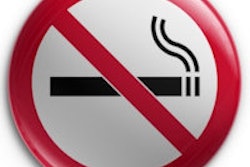The percentage of U.S. middle and high school students who use electronic cigarettes more than doubled from 2011 to 2012, according to data published by the Centers for Disease Control and Prevention (Morbidity and Mortality Report, September 6, 2013).
The findings, from the National Youth Tobacco Survey, show that the percentage of high school students who reported ever using an e-cigarette rose from 4.7% in 2011 to 10% in 2012. In the same time period, high school students using e-cigarettes within the past 30 days rose from 1.5% to 2.8%. Use also doubled among middle school students. Altogether, in 2012, more than 1.78 million middle and high school students nationwide had tried e-cigarettes.
The study also found that 76.3% of middle and high school students who used e-cigarettes within the past 30 days also smoked conventional cigarettes in the same period. In addition, 1 in 5 middle school students who reported ever using e-cigarettes say they have never tried conventional cigarettes. This raises concern that there may be young people for whom e-cigarettes could be an entry point to use conventional tobacco products, including cigarettes, according to the CDC, which called the trend "deeply troubling."
E-cigarettes, are battery-powered devices that provide doses of nicotine and other additives to the user in an aerosol. E-cigarettes not marketed for therapeutic purposes are currently unregulated by the U.S. Food and Drug Administration (FDA). The FDA Center for Tobacco Products has announced that it intends to expand its jurisdiction over tobacco products to include e-cigarettes, but has not yet issued regulatory rules.
Although some e-cigarettes have been marketed as smoking-cessation aids, there is no conclusive scientific evidence that e-cigarettes promote successful long-term quitting, CDC officials noted. However, there are proven cessation strategies and treatments, including counseling and FDA-approved cessation medications.



















